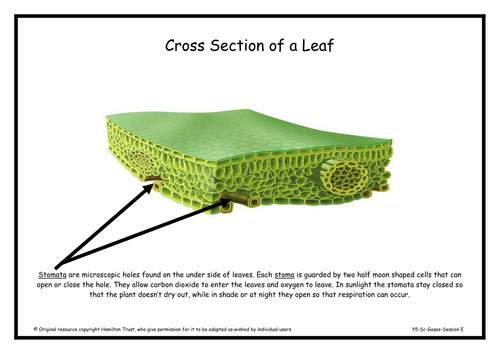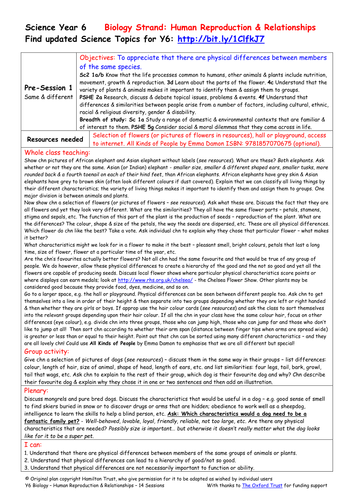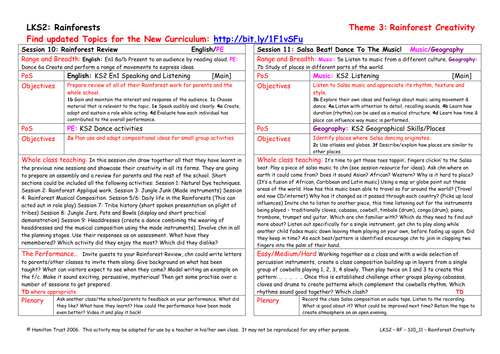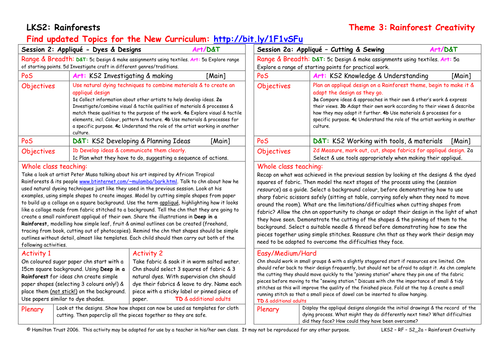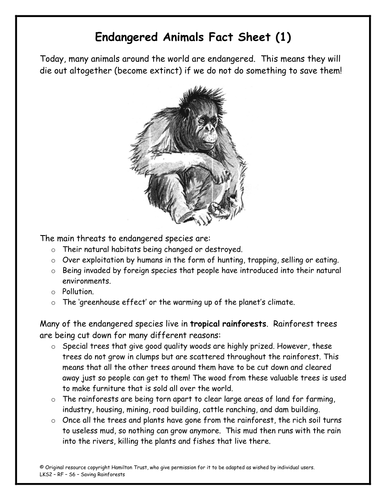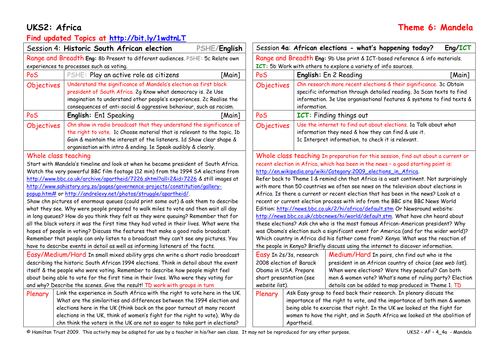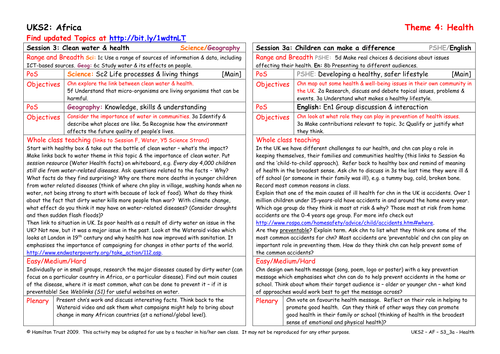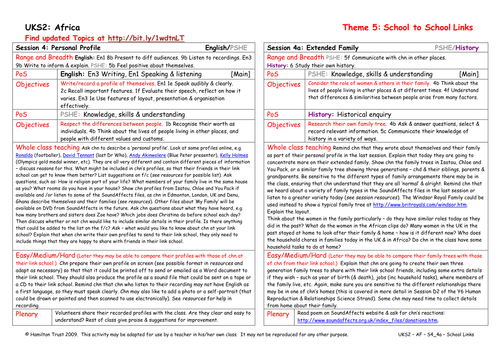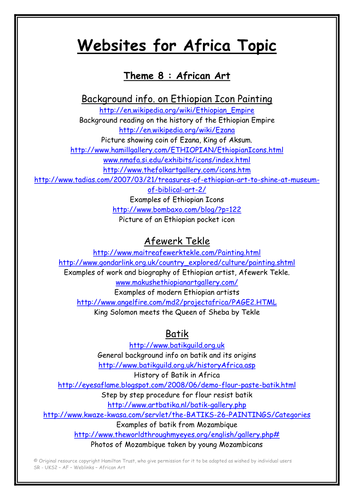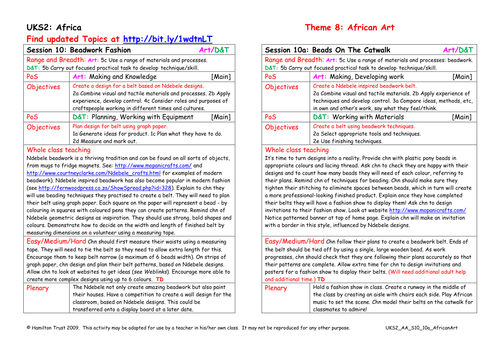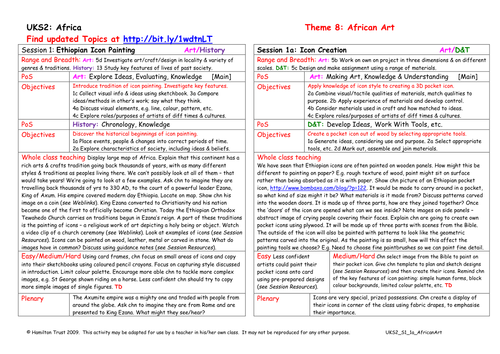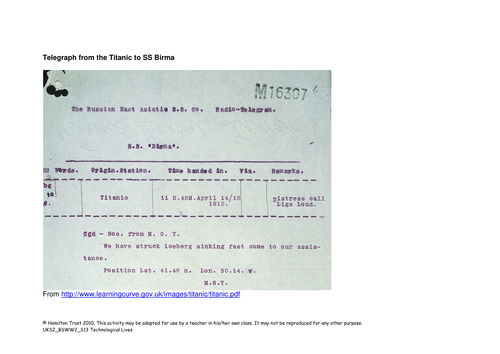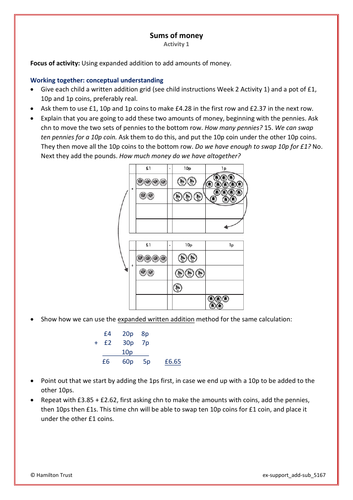
397Uploads
10040k+Views
11644k+Downloads
All resources

Uses of gases
Without oxygen in the atmosphere life on Earth would be impossible, but there is more to gas than breathing it in and out. Children investigate the uses of gases in everyday life situations. Suitable for Y5 pupils.

Year 3 Fiction 1: Stories by the same author (Michael Foreman)
Using the delightful illustrations and books of Michael Foreman (Dinosaurs and All That Rubbish and I'll Take You to Mrs Cole), children have many opportunities to practice simple, compound and complex sentences with powerful verbs. They then create their own stories based around I'll Take You to Mrs Cole, by Nigel Gray and Michael Foreman.

Same and different
The first two sessions are an introduction to the Strand.
Session 1 - Help children appreciate that there are many physical differences between plants and animals (including humans) that are not necessarily good or bad nor important to function or ability.
Session 2 - Look in more detail at differences between people living in Britain. Discuss our multi-cultural society. Share poems in We are Britain by Benjamin Zephaniah to inspire children to write poems about themselves. Can children recognise their own Wanted poster?
Suitable for Y6 pupils.

Rainforest Review
This session brings together all the parts of the rainforest creativity theme. From music created with made instruments, dance and the wearing of headdresses to the displaying and showing of pots. Celebrate everything that has been achieved.

Rainforests: Looking into deforestation
In the next ten years at the current rate half of the world’s rainforests will disappear. Children look in brief at the causes of deforestation before creating on maps a horrific view of the future.

Appliqué - Dyes & Designs
Amazing Amazonian Appliqué! Children use the work of an artist inspired by the rainforest and Deep in a Rainforest as a starting point for some art work of their own. They create simple designs and dye their fabric nature’s way in this session.

Endangered Animals
In this session children find out that it’s not only the Orangu-tans that are endangered. Children select animals or plants from the lists provided and start to find out more about their chosen animal or plant.

Historic South African election
Black Africans were very eager to vote in the 1994 South African election. Discuss the significance of Mandela’s election as the first black president in South Africa. Use historic film footage to show queues of voters and reactions to the election.
Suitable for years 5 and 6.

Mental Oral Starters :Y3 Aut Sequence 3
Mental and oral starters for Year 3 Autumn Teaching Sequence 3.

Children can make a difference
Children research what are key health issues for their own class. Focus on accidents and how they can be prevented. Understand concept of preventable and how children can play an important role in prevention
Suitable for years 5 and 6.

Extended Family
Now children are going to expand the information about themselves to include their family. They draw family trees. Discuss the role of women – do children’s mothers have the same role as their grandmothers or earlier generations? What about the African women?
Suitable for years 5 and 6.

Ethiopian Icon Painting
Take a trip back in time to introduce art of icon painting from ancient kingdom of Ethiopia.
Children explore features of this art form and consider how they were painted and their purpose. They copy small areas of icons to capture style elements.

Beadwork Fashion
Ndebele beadwork is a thriving tradition and can be found on all sorts of modern items. Children explore how it has been used in fashion and design simple belts based on the geometric designs of the Ndebele people

Icon Creation
Create an Ethiopian pocket icon. Children explore techniques of painting on wood and create their own icon images based on their studies.

Telegrams
Children look at old telegrams and then write their own about an important event to the British Prime Minister of the day.

Revise fractions; find unit and non-unit fractions of amounts - Teaching Presentation - Year 4
This presentation provides three days of teaching that cover the objectives:
Count in 1⁄4s, 1⁄3s, 1⁄8s and 1⁄10s saying equivalent fractions.
Find unit and non-unit fractions of amounts.
It includes starter activities, whole class teaching, group activities, practice sheets and mastery questions. It can be used on a variety of interactive whiteboards.
Day 1
Count in thirds along a 0-5 line marked in thirds. Point at a mark; children write the number. Repeat with a line showing 1/4s. Stress mixed numbers, e.g.one and three quarters; equivalence, e.g. one and a half is the same as one and two quarters. Repeat for tenths.
Day 2
– Use a picture of a chocolate bar with 30 pieces to show how to find 1/5, 3/5, and 4/5 of 30, then 1/6 of 30 and 5/6 of 30. Repeat with 50 pieces to find 1/10 and subsequent non-unit fractions, e.g. 3/10.
Day 3
Sketch a pizza and divide it into eight equal sections. If 16 bits of salami are distributed equally, how much on each slice? Show that 1/8 of 16 is 2 (16 ÷ 8); then derive other facts: 2/8 of 16 = 4, 3/8 of 16 = 6, etc. Show that 4/8 is 1/2. Demonstrate using a bar model and repeat with 24 pieces of tomato.
This teaching is part of Hamilton’s Year 4 Decimals and Fractions block. Each Hamilton maths block contains a complete set of planning and resources to teach a term’s worth of objectives for one of the National Curriculum for England’s maths areas.

Subtract larger numbers using counting up (frog) - Teaching Presentation - Year 3
This presentation provides five days of teaching that cover the objectives:
• Revise placing 2-digit numbers on lines
• Place 3-digit numbers on lines
It includes starter activities, whole class teaching, group activities, practice sheets and mastery questions. It can be used on a variety of interactive whiteboards.
Although column subtraction is specified for Year 3 in the National Curriculum, Hamilton believe that teaching column subtraction in Year 4 will be more successful. The National Curriculum Guidance specifies that teachers can teach areas of study in different year groups than those mentioned in the Curriculum, so long as they are taught within the same Key Stage. If you would like to teach column subtraction in Year 3 please see Year 4 Addition and Subtraction autumn Unit 7, spring Unit 4 and summer Units 2 and 3.
Day 1 Teaching
Write 137 – 72. Agree we can use Frog to find this difference, by, counting up from 72 to 137. Draw an empty number line jotting to show this and model each of Frog’s jumps (72 to 80, 80 to 100 and 100 to 137). Explain that we can do 1 big jump to 100. Repeat to model using Frog to do £1.46 – 83p. Children try £1.23 – 88p.
Day 2 Teaching
Display a word problem resulting in the calculation 476 – 438. How can Maths Frog help us to work this out? Frog will start on 438, jump to the next 10 (440), then jump to 470, then 476. Remind children that we could do one big jump of 36 from 440 to 476 if we are confident but we don’t have to! Children try 873 – 837.
Day 3 Teaching
Show a toy priced £4.67. Give a child a £5 note and ask them to use this to pay for the toy. You’ve given the shopkeeper too much money. How will she work out how much change to give you? Maths Frog can help us! Sketch a line from £4.67 to £5. Model using Frog to hop to £4.70 and then to £5. Repeat, to find change from £10 and £20.
Day 4 Teaching
Show a game and say that it costs £18. So far Katie has saved up £7.55. How much more does she need? Maths Frog can help! Sketch a line from £7.55 to £18. Model the hops from £7.55 to £7.60, then to £8, then to £18. Ensure children add hops accurately to find the answer: £10.45. Repeat as necessary for finding the difference between £8.43 and £14, then £6.55 and £19.
Day 5 Teaching
A family have £100 and so far have spent £67.73. How much money is left? Use Frog to model the hops. Ask children to add the jumps, adding the £s first then the pence, then put them together. Some children may draw 3 hops, others draw 4. It doesn’t matter as long as we get the right answer! Repeat for a family who have spent £62.41 out of their £100.
This teaching is part of Hamilton’s Year 5 Decimals and Fractions block. Each Hamilton maths block contains a complete set of planning and resources to teach a term’s worth of objectives for one of the National Curriculum for England’s maths areas.

Extra Support Activity: Decimal and money calculation. (Year 5 Addition and Subtraction)
This activity is designed to be used by a teacher or a TA with children who need extra support before they can tackle these National Curriculum objectives: Decimal and money calculation.
Sums of Money - Using expanded addition to add amounts of money
DVD Decisions - Using counting up (Frog) to calculate change from £10
This Extra Support Activity is part of our Year 5 Addition and Subtraction block. Each Hamilton maths block contains a complete set of planning and resources to teach a terms worth of objectives for one of the National Curriculum for England’s maths areas.

Problem-Solving Investigation: Decimal and money calculation. (Year 5 Addition and Subtraction)
Year 5 Addition and Subtraction: Decimal and money calculation.
This in-depth Maths Investigation will develop maths meta-skills, and enable children to learn to think mathematically and articulate mathematical ideas.
In-depth Investigation: Adding Odd and Even Amounts
Children create two amounts of money – one with even digits, one with odd digits – and add these. They look for patterns of even/odd in the totals.
This problem-solving investigation is part of our Year 5 Addition and Subtraction block. Each Hamilton maths block contains a complete set of planning and resources to teach a terms worth of objectives for one of the National Curriculum for England’s maths areas.

Extra Support Activity:Column subtraction; choose strategies. (Year 5 Addition and Subtraction)
This activity is designed to be used by a teacher or a TA with children who need extra support before they can tackle these National Curriculum objectives: Column subtraction, and choosing a method.
Frog’s Ginormous Jumps - Using counting up (Frog) to subtract 3-digit numbers.
This Extra Support Activity is part of our Year 5 Addition and Subtraction block. Each Hamilton maths block contains a complete set of planning and resources to teach a terms worth of objectives for one of the National Curriculum for England’s maths areas.

